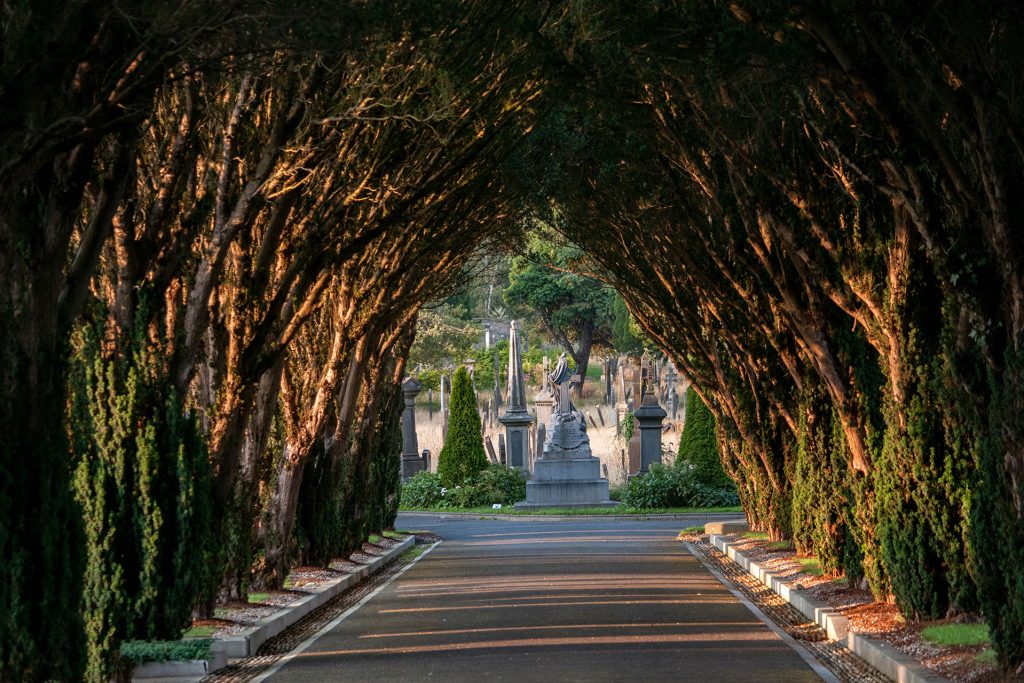Next time you need to take a break from studying English in Dublin, why not take a trip to Glasnevin cemetery? If you have any interest in Irish history and culture, this is a must-see. It is also located right next door to Dublin’s National Botanical Gardens, so you can even combine these two attractions in the same trip!
Glasnevin Cemetery is the largest cemetery in Ireland, with an estimated 1.5 million people buried there. It is located just 2.5km from the city centre and was established in 1832. Today it contains a museum, gift shop and cafe. Guided tours occur frequently, as do audio tours in different languages Taking a tour is a good way to test your level if you are studying English in Dublin. The cemetery is also said to contain the world’s largest collection of Celtic crosses, since many of the gravestones are decorated in this way.
Famous Graves of Glasnevin Cemetery
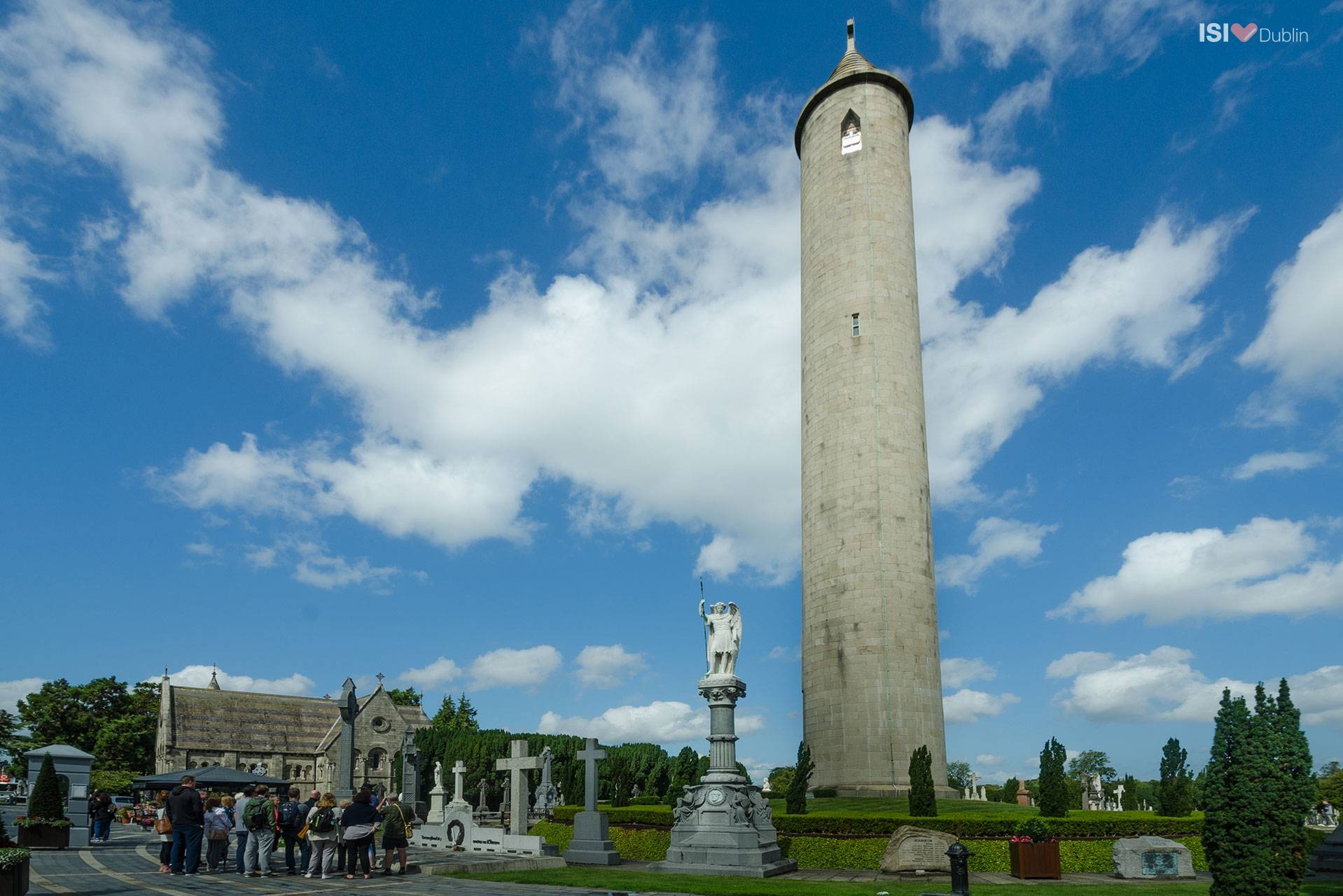
The cemetery’s most prominent feature is the tall round tower, visible from many streets away, that stands over the large tomb of Daniel O’Connell (1775-1847). He was known as Ireland’s Liberator and gives his name to Dublin’s O’Connell street (formerly known as Sackville Street). He is only one of many famous Irish historical and cultural figures who are buried in Glasnevin.
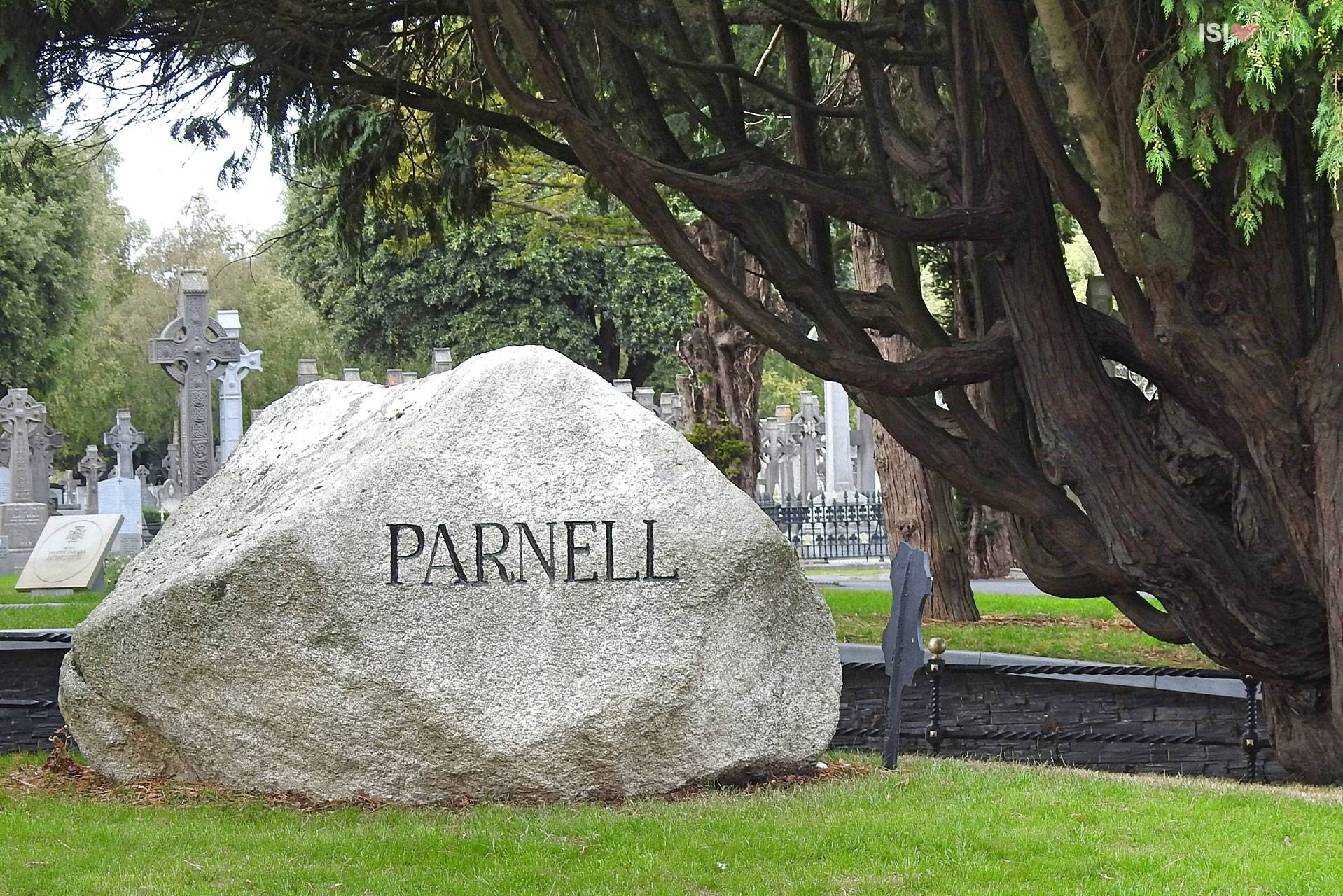
Charles Stewart Parnell (1846-91), known as Ireland’s ‘uncrowned king’, is also buried in Glasnevin. He died of pneumonia following an extramarital affair that created a considerable scandal among the Catholic hierarchy at the time.
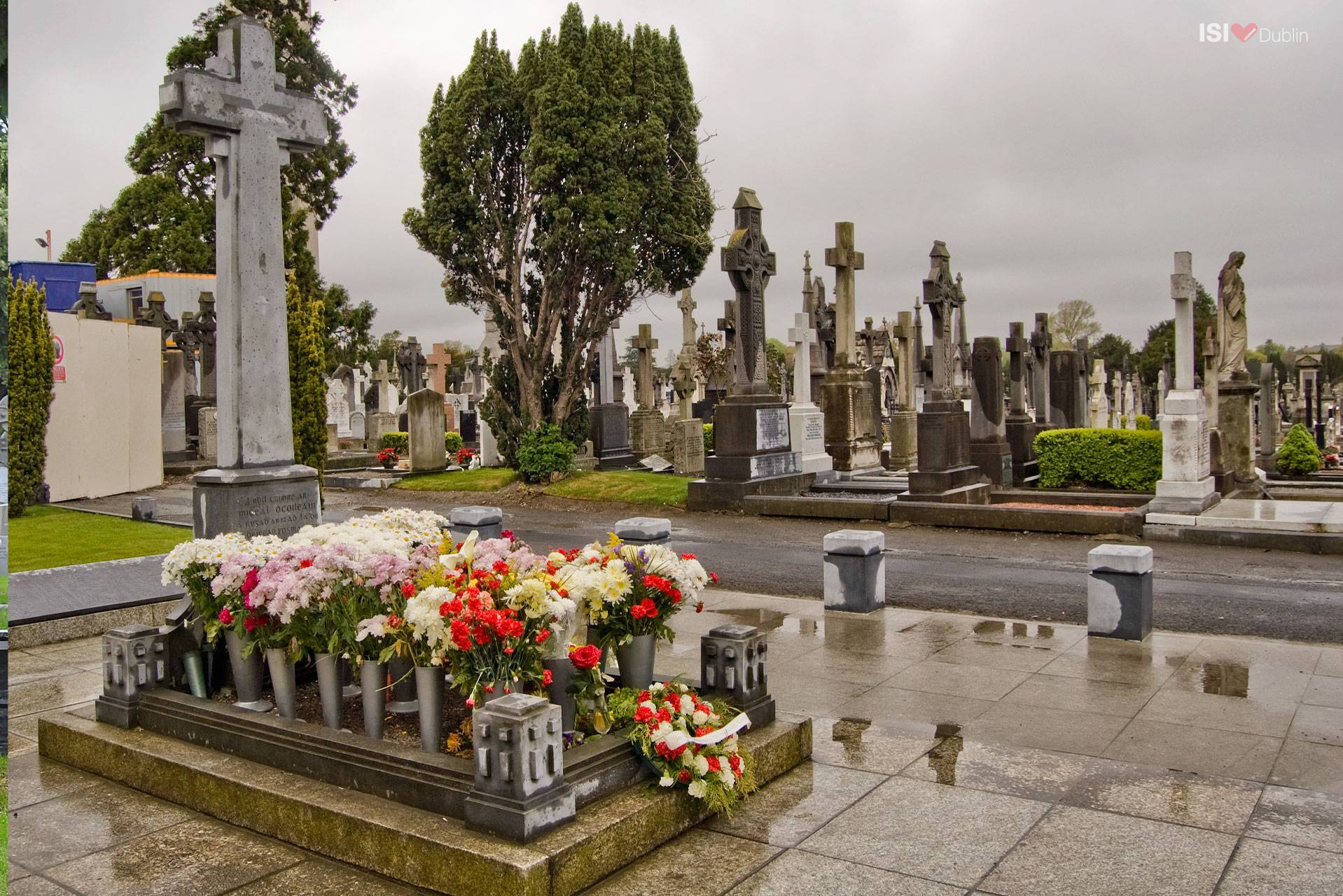
The grave of Michael Collins (1890-1922) is very prominent in Glasnevin cemetery. He was instrumental in the fight against the British and the founding of the Republic in 1922 following the War of Independence. His fiancee Kitty Kiernan, and his friend Harry Boland, are also buried in Glasnevin cemetery.
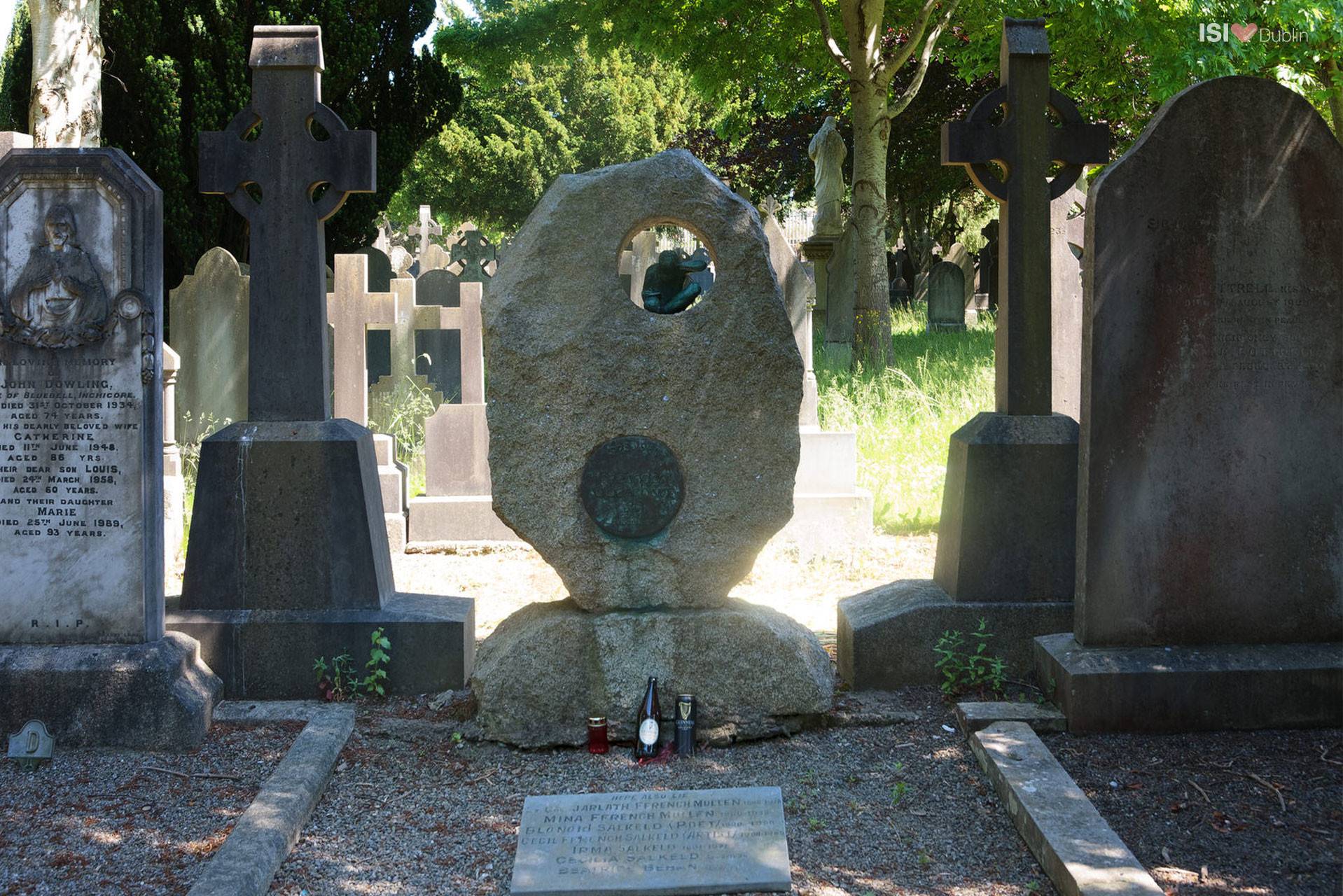
Irish writer Brendan Behan (1923-64), author of the plays The Hostageand The Quare Fellow, is also buried in Glasnevin cemetery. He was a member of the IRA and did time in prison as a young man, describing his experiences in his memoir Borstal Boy. You may note in the picture that an unopened can of Guinness has been left by Behan’s grave – he was very fond of that drink while he lived, saying of himself: ‘I’m a drinker with a writing problem!’
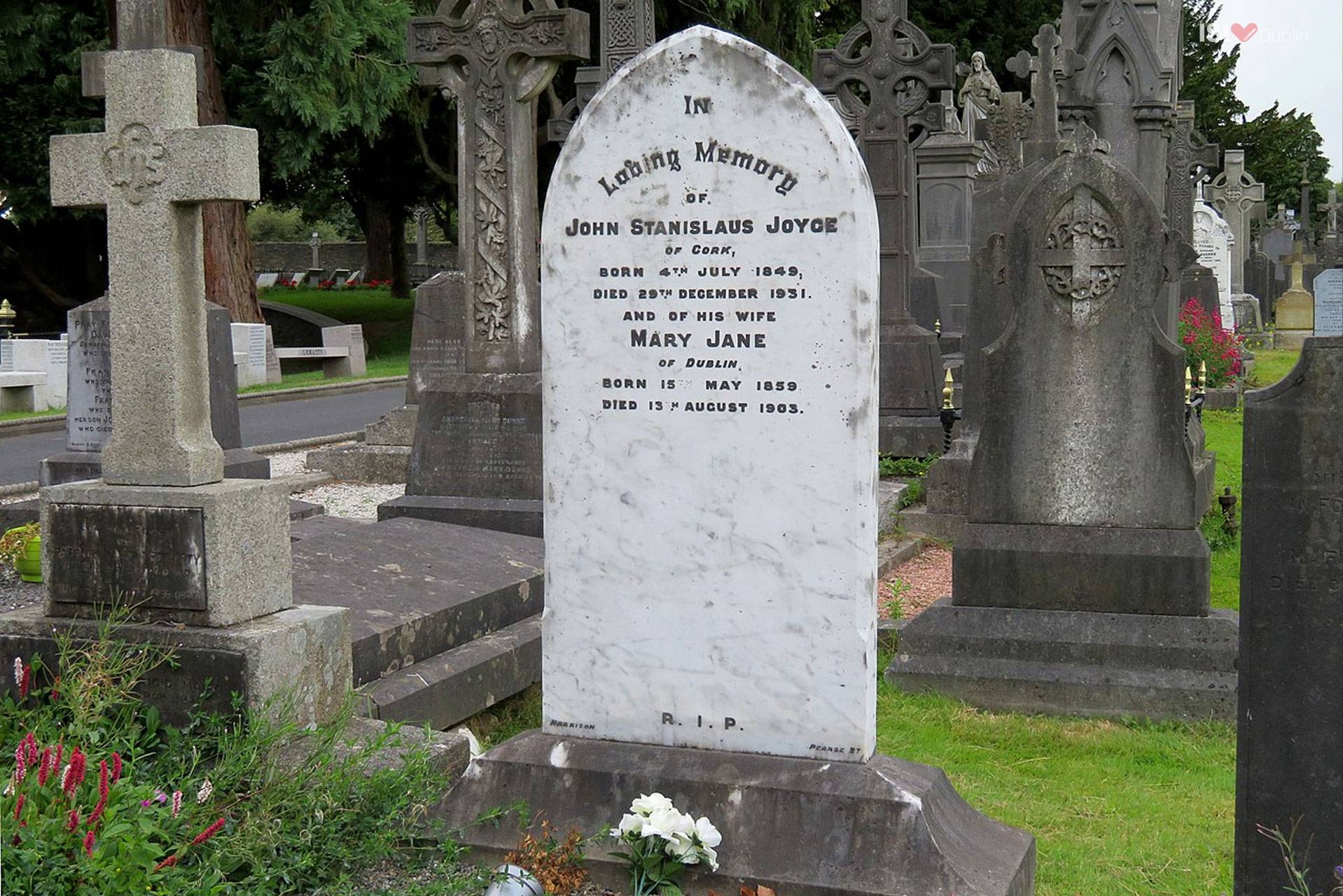
The grave of John Stanislaus Joyce (1848-1931), father of the famous writer James Joyce (1882-1941), is also to be found in Glasnevin cemetery. An important chapter of Joyce’s novel Ulyssesis set in Glasnevin cemetery, and every year live readings of the novel occur in the graveyard to mark Bloomsday on 16th June, the day on which the novel is set.
Other famous people who are buried in Glasnevin cemetery include the poet Gerald Manley Hopkins, the writer Christy Brown (subject of the film My Left Foot with Daniel Day Lewis), former president Eamon de Valera, art collector Sir Alfred Chester Beatty, singer Luke Kelly of The Dubliners band, Irish patriots such as Theobald Wolfe Tone, Roger Casement, Cathal Brugha, Arthur Griffith and many,many others.
To sum up, if you want some immersion in Irish history, you cannot do better than Glasnevin cemetery. Give it a try next time you have some time to spare from studying English in Dublin!
